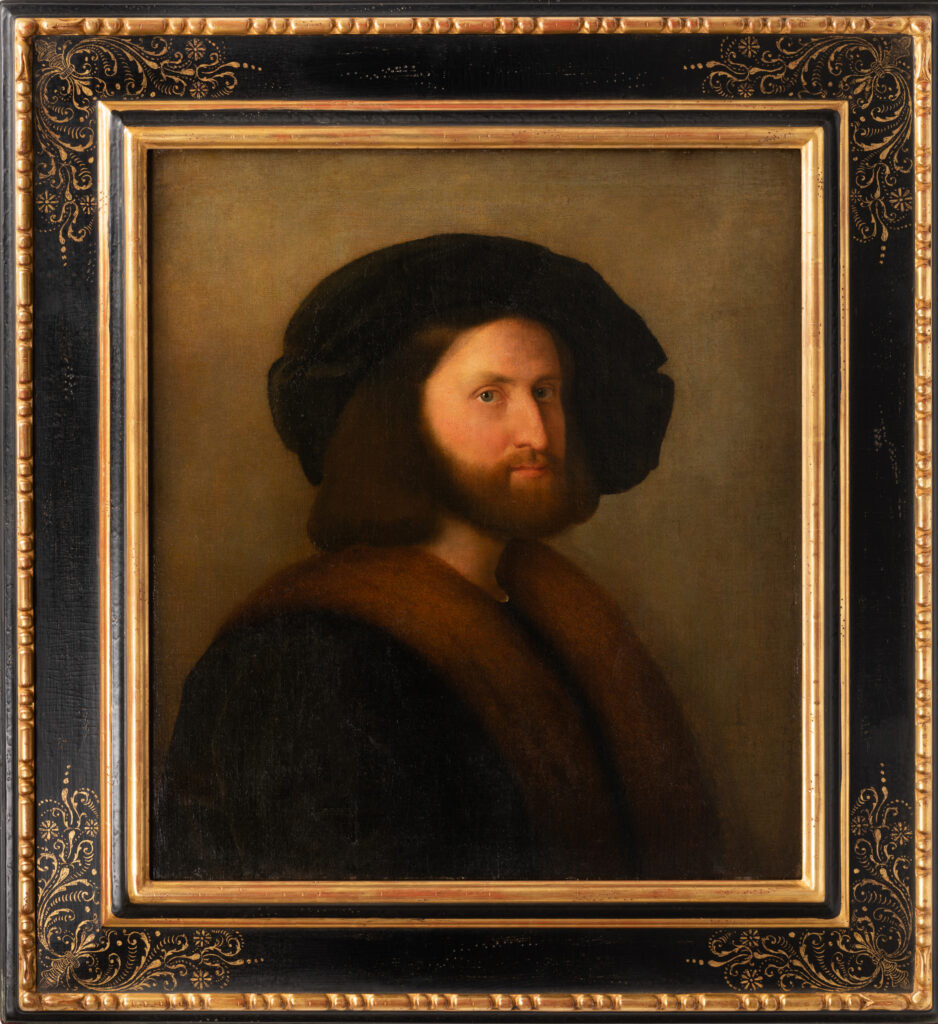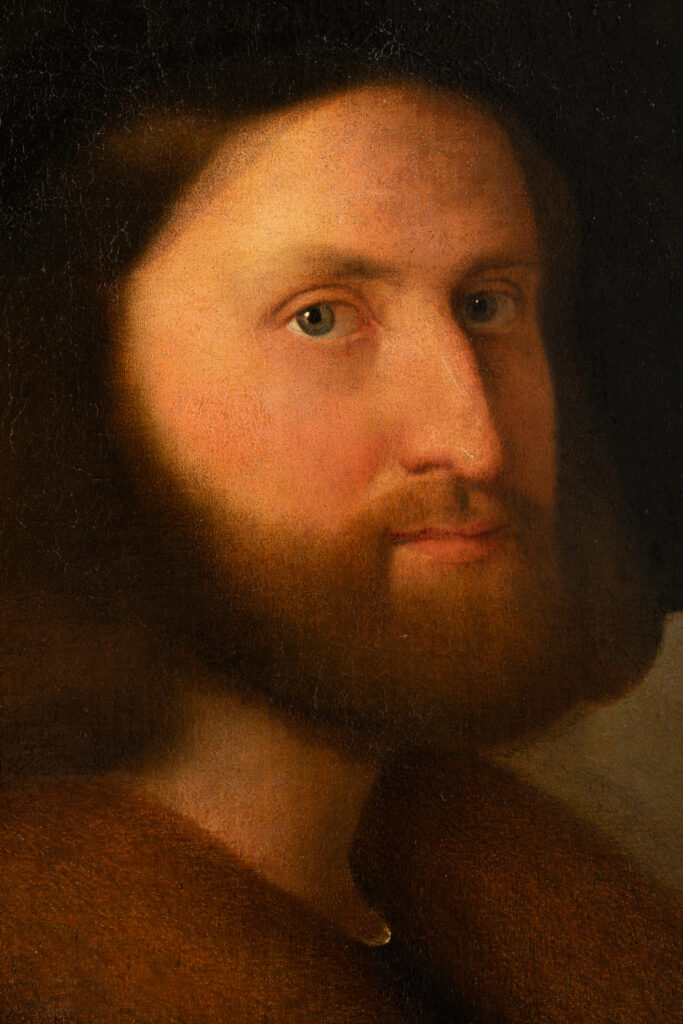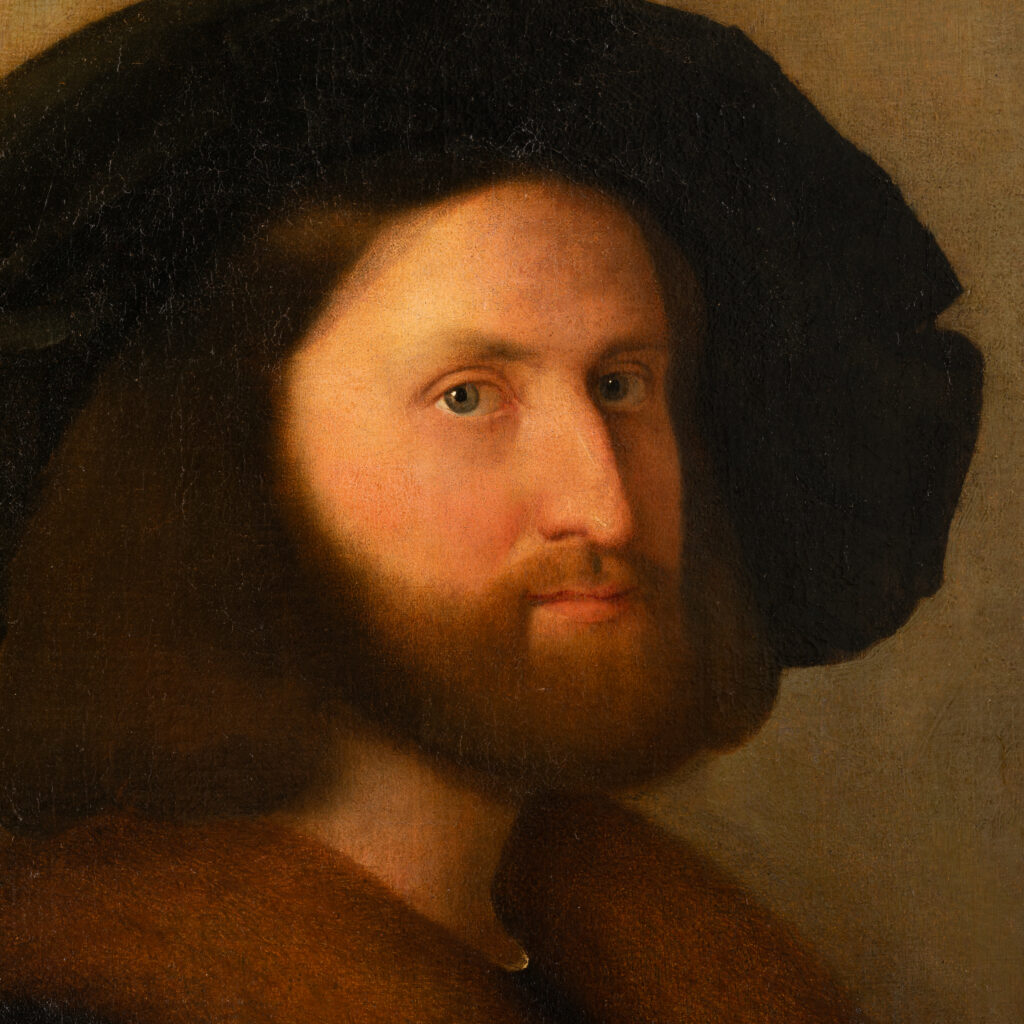This impressive portrait depicts a gentleman in bust form, viewed from ¾ and looking toward the viewer. Wearing a large hat and a black coat with a fur collar, this man is probably a merchant in view of his luxurious outfit. With a full beard and shoulder-length hair, this man is shown here in the Italian fashion of the first two decades of the 16th century.
The ochre tones that dominate the composition highlight the rosy complexion of the subject’s face and his enigmatic blue eyes. The intense gaze of the figure and his motionless but serene posture are accentuated by a soft, nuanced and controlled brushstroke; which gives this portrait a fascinating and intriguing aspect.
True hub, commercial crossroads between the East and the West: Venice was, at the beginning of the 16th century, at its cultural peak. However, wars and plague epidemics anchor in the minds the dark trace of an ephemeral and fragile life. Sensitive to these ideas, the painters will play with the shade and the light in their compositions, to thus present us works more poetic, nuanced and more technical. This play of chiaroscuro becomes a true pictorial tradition, in particular Venetian, and of which our painter is the worthy representative.
Jacopo Palma, whose real name was Jacomo Nigretti de Lavalle, was born into a modest family of shepherds in Serina (Bergamo, Lombardy) around 1480. Little is known about his early life and training: he is mentioned in Venice in 1510 where he was probably apprenticed. He began his career in the late Venetian Quattrocento and derived some principles from it: compositional patterns, iconographic themes and the ordering of large religious compositions. He also learned a lot from the great Venetian masters of his time such as Vittore Carpaccio, Giovanni Bellini, Giorgione and Titian whom he frequented. Palma soon found himself the leading painter in Venice and continually sought to satisfy wealthy patrons who guaranteed him reputation, income and numerous commissions. His art evolved throughout his career: while he concentrated on small mythological and allegorical subjects during his youth, sacred subjects and large compositions became the mark of his maturity. As for portraits, Palma made them throughout his career to meet the demands of wealthy clients in the area. He painted many portraits of beautiful young blonde girls, to the point of creating a physical archetype of Venetian female beauty that would endure after his death. Palma was also known for modifying his way of painting according to the client: for a religious organization, he took a purely Venetian style with a preeminence of the holy family and the landscape background; while for private commissions, he emphasized intimacy, naturalism and chiaroscuro, reflecting the mortality and imperfection of the subjects.
Today many of his works have been attributed to others over the centuries (Giorgione, Titian or Palma the Younger). But the catalog of his works has been enriched over the last few decades by new attributions and more detailed studies of his style. His plastic technique, his mastery of the contrapposto, a rich and intense color palette, a diversified repertoire of characters while respecting the classical constructions; all these qualities dominated his work and founded Palma the Elder a major figure of the painting of the Italian High Renaissance.
The attribution of our painting has been confirmed after individual and independent examination by Mauro Lucco (medievalist and modernist art historian, professor of art history at the University of Bologna, and curator of important exhibitions in Italy and abroad) and by Paul Joannides (Professor of Art History at the University of Cambridge, specialist in Italian Renaissance art and French painting, author of books on Titian, Masaccio and Raphael).
Provenance: 1st Marquis of Donegall; Christie’s London sale March 19/22, 1781; Henry Doetsch Collection (1839-1894), London; Christie’s London sale June 22, 1895, lot 35 (as being by Palma Vecchio); Dorotheum Vienna sale October 18, 2016 (Old Master Painting); then French private collection.



